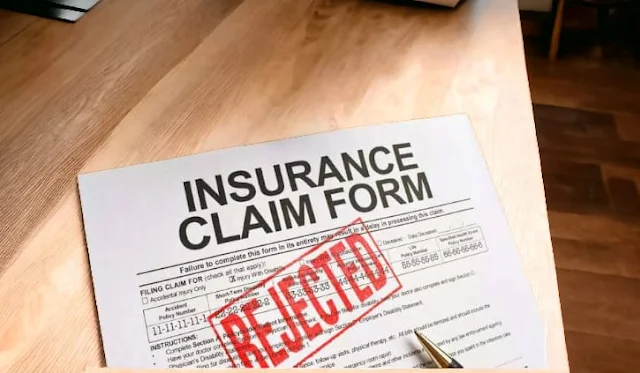Filing an Insurance Claim: Step-by-Step Guide to Filing an Insurance Claim After a Crash in the United States
Car accidents can be stressful and overwhelming, but understanding the insurance claim process can make it easier to manage. This comprehensive guide walks you through the steps to file an insurance claim after a crash in the United States, ensuring you receive the compensation you deserve.
What is an Insurance Claim?
An insurance claim is a formal request made to your insurance company to cover damages or injuries after an accident. Depending on the circumstances, the claim can involve vehicle repairs, medical bills, or compensation for property damage.
Types of Insurance Claims After a Crash
-
First-Party Claim: Filed with your own insurance company.
- Examples: Collision coverage, medical payments, or uninsured motorist coverage.
-
Third-Party Claim: Filed with the at-fault driver’s insurance company.
- Example: Liability coverage for property damage or bodily injury.
Step-by-Step Guide to Filing an Insurance Claim
Step 1: Ensure Safety and Call Authorities
- Check for injuries and call 911 if anyone needs medical attention.
- Report the accident to the police and obtain a copy of the accident report.
Step 2: Gather Information at the Scene
- Exchange contact and insurance information with the other driver(s).
- Collect details of witnesses and take photos of:
- Vehicle damage.
- Accident location.
- License plates.
Step 3: Notify Your Insurance Company
- Call your insurance provider as soon as possible to report the accident.
- Provide basic details, such as the date, time, and location of the crash.
Step 4: Understand Your Coverage
- Review your policy to understand what is covered and the limits.
- Common coverages include:
- Collision: Covers repairs to your vehicle.
- Liability: Pays for damages or injuries caused to others.
- Comprehensive: Covers non-collision damages like theft or weather-related incidents.
Step 5: File the Claim
- Provide your insurance company with:
- Police report.
- Photos and documentation of damages.
- Witness statements, if available.
- Fill out the required claim forms promptly.
Step 6: Work with the Claims Adjuster
- The insurance company will assign a claims adjuster to evaluate the damages.
- The adjuster may:
- Inspect your vehicle.
- Request additional documents or information.
- Cooperate fully and provide accurate details.
Step 7: Get Repair Estimates
- Obtain repair estimates from certified mechanics or body shops.
- Some insurers may recommend specific repair facilities.
Step 8: Negotiate and Finalize the Settlement
- Review the adjuster’s report and proposed settlement amount.
- Negotiate if necessary to ensure fair compensation.
- Once agreed, the insurance company will disburse the payment.
Step 9: Monitor the Claim’s Progress
- Stay in touch with your insurance provider to track the claim’s status.
- Keep copies of all correspondence and documentation.
Special Scenarios and Considerations
Filing a Claim in a No-Fault State
- In no-fault states, your insurance pays for your injuries regardless of who caused the accident.
- Personal Injury Protection (PIP) coverage is essential.
What to Do if the At-Fault Driver is Uninsured
- File a claim under your uninsured/underinsured motorist coverage.
- This coverage compensates for damages if the at-fault driver lacks sufficient insurance.
Filing a Claim for Hit-and-Run Accidents
- Report the incident to the police immediately.
- File a claim under your uninsured motorist or collision coverage.
Common Mistakes to Avoid
-
Delaying the Claim
- Report the accident to your insurer promptly to avoid claim denials.
-
Admitting Fault
- Never admit fault at the scene or to the insurance company.
- Let the claims adjuster determine liability based on the evidence.
-
Not Documenting the Incident
- Comprehensive documentation is crucial for a successful claim.
Conclusion
Filing an insurance claim after a crash can be daunting, but understanding the process simplifies it significantly. By following the steps outlined in this guide, you can ensure a smooth claims process and secure the compensation you need to recover from the accident. Remember to review your policy regularly and consult with your insurance provider or a legal expert when needed.
Frequently Asked Questions (FAQs)
How long do I have to file an insurance claim after an accident?
Most insurance policies require claims to be filed within a reasonable time, often 30 days. Check your policy for specific deadlines.
Will my premium increase after filing a claim?
Filing a claim may result in higher premiums, especially if you were at fault. The impact depends on your insurer’s policies and your driving history.
Can I choose my repair shop?
Yes, you can typically choose your repair shop. However, insurers may recommend preferred facilities.
What if the insurance company denies my claim?
Review the denial letter to understand the reason. You can:
o Provide additional evidence.
o Appeal the decision.
o Consult an attorney if necessary.
Do I need a lawyer to file an insurance claim?
For straightforward claims, a lawyer may not be necessary. However, legal assistance is advisable for disputes or significant injuries.
Can I file a claim without a police report?
While it’s possible, a police report strengthens your case and provides critical documentation.
How long does it take to settle a claim?
The timeline varies based on the complexity of the case. Simple claims may settle within weeks, while disputed cases can take months.
What is a deductible, and how does it work?
A deductible is the amount you pay out-of-pocket before insurance covers the rest. For example, if your repair costs $1,000 and your deductible is $500, the insurer pays $500.
What if I’m partially at fault for the accident?
In states with comparative negligence laws, your compensation may be reduced based on your percentage of fault.





Thank you for visiting crash lawyers org !
We're committed to providing you with expert guidance and support for all your crash-related legal needs.